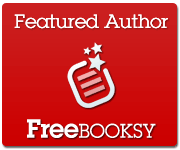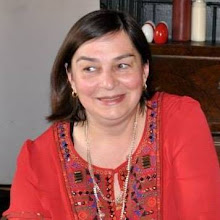As our first book goes to press – the novel A Clash of Innocents by Sue Guiney – I can reveal that an experiment I have attempted with Google Wave has proved a definite success. Google Wave is collaborative software so I wondered if it could help Ward Wood work as a team, letting the authors take more of a role and helping us all to communicate regularly.
If you haven’t seen Google Wave and ‘collaborative software’ sounds tricky, then don’t be put off. It’s simple to register with Google Wave (I invite authors by email) and after that it’s as easy as using message boards or email for communication. The benefit of Google Wave is that you invite the people you need to communicate with on a specific subject, and all of the messages on that theme will be kept neatly together in that ‘Wave’.
For example, for Sue’s novel I invited her and my colleague Mike Fortune-Wood into a Wave. This Wave is now a string of messages containing everything we need to work on her novel. We’ve passed the Word file to each other throughout the editing stages, and all the versions of the file are there in the Wave so it’s easy to see how it progressed and which is the latest version.
We also passed photographs of the authors and ideas for the cover design. ‘All very easy to do by email’ you might say, but it’s such a nuisance hunting through emails for a bit of information you know you’ve received. Scrolling back up through a Wave of messages is much easier. As Sue, Mike or I had extra ideas we could post them on the Wave, and even if they weren’t ideas that could be acted on for weeks they were still there for later action.
Using Google Wave definitely made my work much easier. As I was editing and needing answers to questions I could put them in the Wave then carry on working. By the time I looked at the Wave again, Sue had usually answered, and if I needed to go out of the office for a few hours I could do that knowing that I could come back and find some responses on the Wave. It did make the editing process more efficient, and I’ve edited a good number of books in the past so I know how different this feels.
Apart from all of this it also keeps authors and publishers more in touch than they have been traditionally. I’ve worked as both editor and author, and I know how frustrating it can be for authors to wonder if a long silence means we’re being neglected, or if it means the publisher is busy on our book. With Google Wave the author could stay well informed and see how the book was progressing throughout the various stages.
At the same time it felt as if we were staying in touch and was more friendly than working on files exchanged by email. Other Waves were set up with information for everybody, so our first three authors were invited to participate in those discussions. One of our authors is in Finland, one is in London, and one is in Penzance, so a way of letting them ‘meet’ and share ideas on book launches and other subjects should help create a sense of getting to know each other.
We often say that writing is a solitary business, and so is editing. With Google Wave this has felt quite different, and once we were working on the cover, book design and production with Mike Fortune-Wood it did feel as close as it could to working in the same office. His final files could be posted in the Wave and viewed using Google Documents.
There are many more features to Google Wave that I haven’t had time to try out yet, but it certainly streamlines the types of communication I need in order to work well. Apart from the message-board look keeping all information on each subject neatly together and the ability to add various files, including text and pictures, it also lets you edit or delete each post in the waves to keep them concise and tidy. It’s also possible to start discussing with the others live if they come online at the same time.
Anyone who works in publishing will know that it’s not just about editing, book design and production. At the same time as all that we need to be thinking about author reading tours, book launches, arranging distribution, and communicating with the press and media. Each of these elements has to be dealt with at exactly the right time so that everything happens at the relevant moment.
Google Wave has a scheduler to help me see what I need to do in order of priority, and it has really been a help feeling that I can unload that from inside my head to let the ‘Google brain’ worry about remembering it all! Submissions waiting to be read are also stored in their own Waves and scheduled for their turn in this priority list. If this all makes me sound extremely organised, then you haven’t seen the usual disorder in my office! Many of us in publishing store much of our ‘to do’ list in our heads and it can get incredibly busy in there. With Google Wave I find I can switch off when I stop working, knowing that nothing will be forgotten.
On top of all this it’s nice to know that even in cases of computer crashes, and wherever we need to travel in the world, we can find all the files and info we need in our virtual office on anybody’s computer. This is how it feels to me on the publishing side and I’d be interested to hear from the authors if it helps them feel better informed and more involved as we go through the process with each of their books.
Subscribe to:
Post Comments (Atom)










I hear that Google plans to retire Google Wave at the end of the year due to lack of uptake (possibly because it was by invitation only, and also I can imagine people may not realise how helpful it is until they actual use it with somebody who knows how to make the most of it).
ReplyDeleteI still want to be able to use this method of working as it makes everything so much more efficient, and also helps us stay in touch and collaborate. It looks like Shareflow could manage similar things to the tasks I use Google Wave for http://www.zenbe.com/shareflow